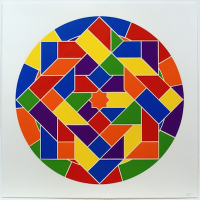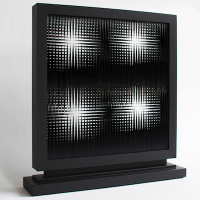
What is a screen-print?
Screen printing is a technique where ink is transferred through a mesh onto a substrate, with areas blocked by a stencil to prevent ink from passing through. This method, also known as serigraphy or silkscreen printing, is commonly used to produce prints on posters, T-shirts, vinyl, stickers, wood, and other materials. The process is a type of stencil printing, allowing for vibrant, detailed designs on various surfaces.
- Show All
- Established
- Discoveries
ARTWORKS RELATED TO SCREEN-PRINT
Andy Warhol
George Gershwin, F. & S. IIB.231 (TP), c. 1980
Limited Edition Print
Screen-print
Inquire For Price
Andy Warhol
Golda Meir, F. & S. II.233, c. 1980
Limited Edition Print
Screen-print
Inquire For Price
David Shrigley
I Will Not Allow The Dark Skies To Affect Me, 2025
Limited Edition Print
Screen-print
Inquire For Price
Robert Motherwell
No. 12 (from The Basque Suite), 1971
Limited Edition Print
Screen-print
Currently Not Available
Andy Warhol
Muhammad Ali: Full Face, II.182, 1978
Limited Edition Print
Screen-print
USD 190,000 - 200,000
Andy Warhol
Mick Jagger (F & S II.141), 1975
Limited Edition Print
Screen-print
USD 200,000 - 250,000

Generative art refers to art that is wholly or partly created through an autonomous system. This system can be independent or non-human, capable of determining features that would otherwise be decided by the artist. The generative system can act as the creator or as a collaborator with the artist. Generative art often refers to works generated algorithmically by computers, where the system plays a significant role in the creation process.

Interactive art is a form of art where the spectator is actively involved by the artist to achieve the artwork's purpose. This involvement can include allowing the visitor to walk around, in, or on the art installation, or even becoming a part of the artwork itself. Works in this category often feature computers, sensors, and interfaces that respond to various inputs such as meteorological changes, heat, motion, or other types of data programmed by the artist.




















